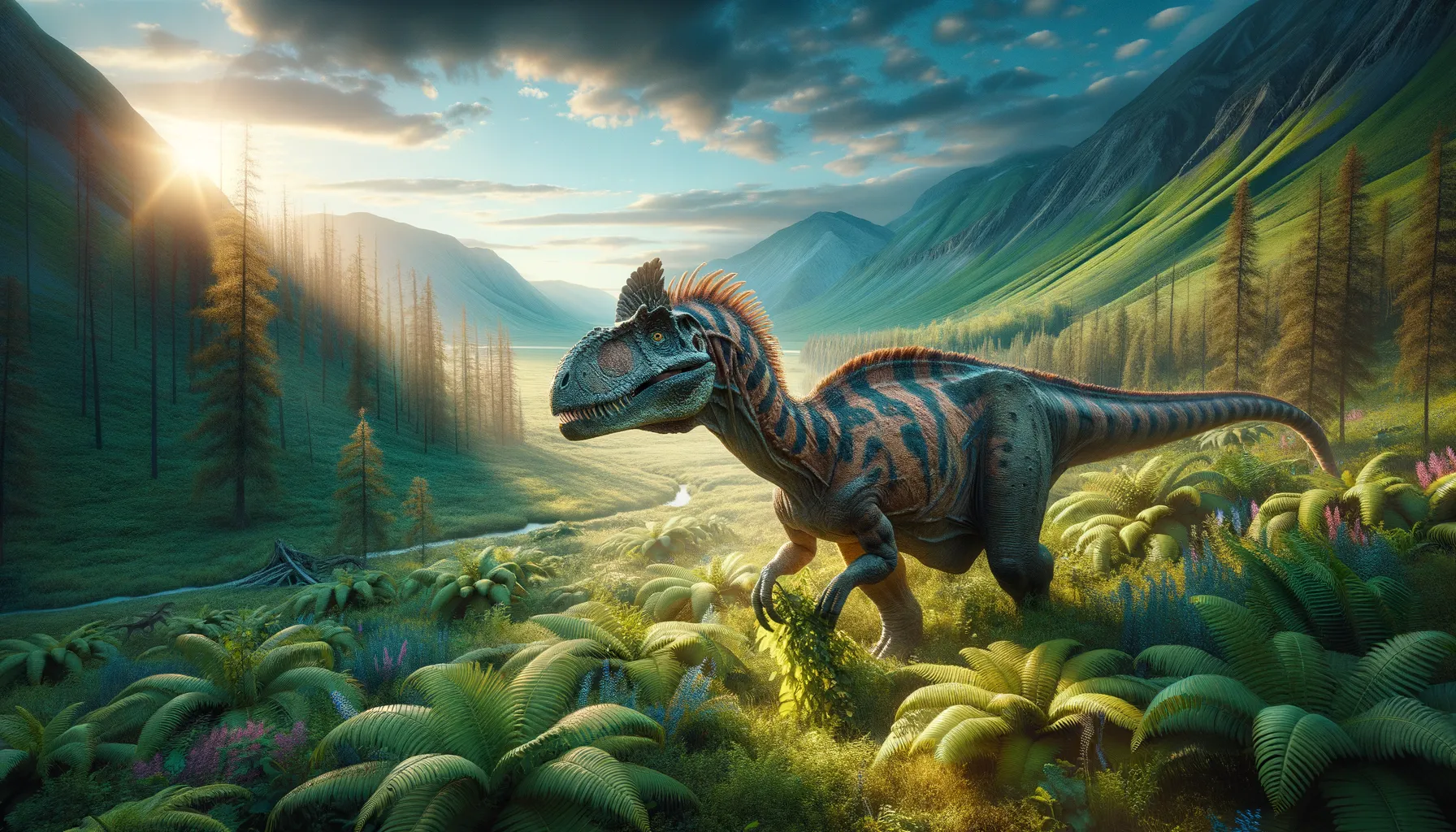
Olorotitan
Crested wonder of the ancient world.
Period
Cretaceous
Length
About 26 to 30 feet long.
Height
Approximately 12 feet tall at the hip.
Weight
Around 3 to 4 tons.
Olorotitan was a hadrosaurid dinosaur, known for its striking crest on its head. It lived during the Late Cretaceous period in what is now known as Russia. Measuring up to 30 feet long, this herbivorous dinosaur roamed lush landscapes, feeding on vegetation. Its social nature suggests it moved in herds, which may have offered protection from predators. The Olorotitan's fossilized remains have provided significant insights into the diversity of dinosaur life in Late Cretaceous Asia.
Diet
Olorotitan was an herbivore, feasting on a variety of plants. Its jaws contained numerous teeth which were ideal for grinding vegetation. Likely, it browsed near ground level and consumed ferns, leaves, and twigs.
Hunting
Being a herbivore, Olorotitan did not hunt for prey. Instead, it likely foraged in groups to find the best feeding spots. Its herding behavior could have deterred some predators.
Environmental challenges
Olorotitan faced challenges such as seasonal changes, which could affect food availability. Competition for resources with other herbivores would have influenced its migratory patterns. Predators in its environment posed constant threats, particularly to younger or weaker members of the herd. Volcanic activity in its habitat region might have also impacted its environment dramatically at times.
Speed
Likely moderately fast for its size.
Lifespan
Estimated to be around 70-80 years.
First discovery
First discovered in the late 1990s in Russia.
Fun Facts
- Olorotitan was a duck-billed dinosaur that lived around 70 million years ago during the Late Cretaceous period.
- Its name, Olorotitan, means 'Giant Swan,' because of its long neck and elegant appearance.
- Olorotitan's fossils have been mostly found in present-day eastern Russia, making it among the only hadrosaurid dinosaurs from that region.
- It is believed that Olorotitan might have used its hollow crest to make sounds for communication with others of its kind.
- This dinosaur could grow up to 8 meters (26 feet) long, making it one of the largest hadrosaurids.
- Olorotitan walked on two legs but could also use four legs when needed, like many other duck-billed dinosaurs.
- Scientists think that Olorotitan lived in lush, swampy environments where it fed on plants.
Growth and Development
Young Olorotitans likely hatched from eggs and grew quickly to increase their chances of survival. As they matured, they developed their characteristic crests, which might have been used for social signaling. These dinosaurs reached their full size over several years, depending on resource availability and environmental conditions. Living in herds possibly aided their growth through shared protection.
Habitat
Olorotitan inhabited coastal plains and floodplains rich with plant life. The region it lived in was likely lush, providing abundant food sources. It would have had access to fresh water from rivers and streams. This habitat supported diverse ecosystems, housing many other dinosaur species alongside Olorotitan.
Interaction with other species
Olorotitan likely lived and traveled in herds, interacting frequently with its own kind. It may have shared its habitat with other herbivorous and carnivorous dinosaurs, leading to complex interspecies dynamics. Its size and potentially defensive group behaviors might have protected it from smaller predators. However, interactions with large predators could be aggressive if not avoided.
Natural lifespan
In natural conditions, it is believed to have lived up to 80 years.
Reproduction
Olorotitan laid eggs, likely in nesting sites that offered some protection. Nesting in colonies was possible, providing increased security for the young. Parental care might have been present, with adults potentially guarding nests or even young hatchlings. The crests might have played a role in mate attraction during breeding seasons.
Social behaviour
Highly social, Olorotitan likely lived and moved in herds. Herding behavior might have reduced the risk of predation through strength in numbers. Its crests could have been used for visual communication or to establish dominance hierarchies. Social structures helped in rearing young and finding resources.
Fossil locations
The primary discovery site for Olorotitan fossils is in the Amur Region of Russia. This area has yielded multiple specimens, enhancing our understanding of this species. The region's fossil beds have been an important source for Cretaceous period discoveries. These findings suggest a rich diversity of dinosaur life in this part of Asia during that era.
